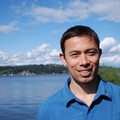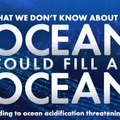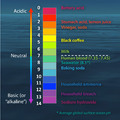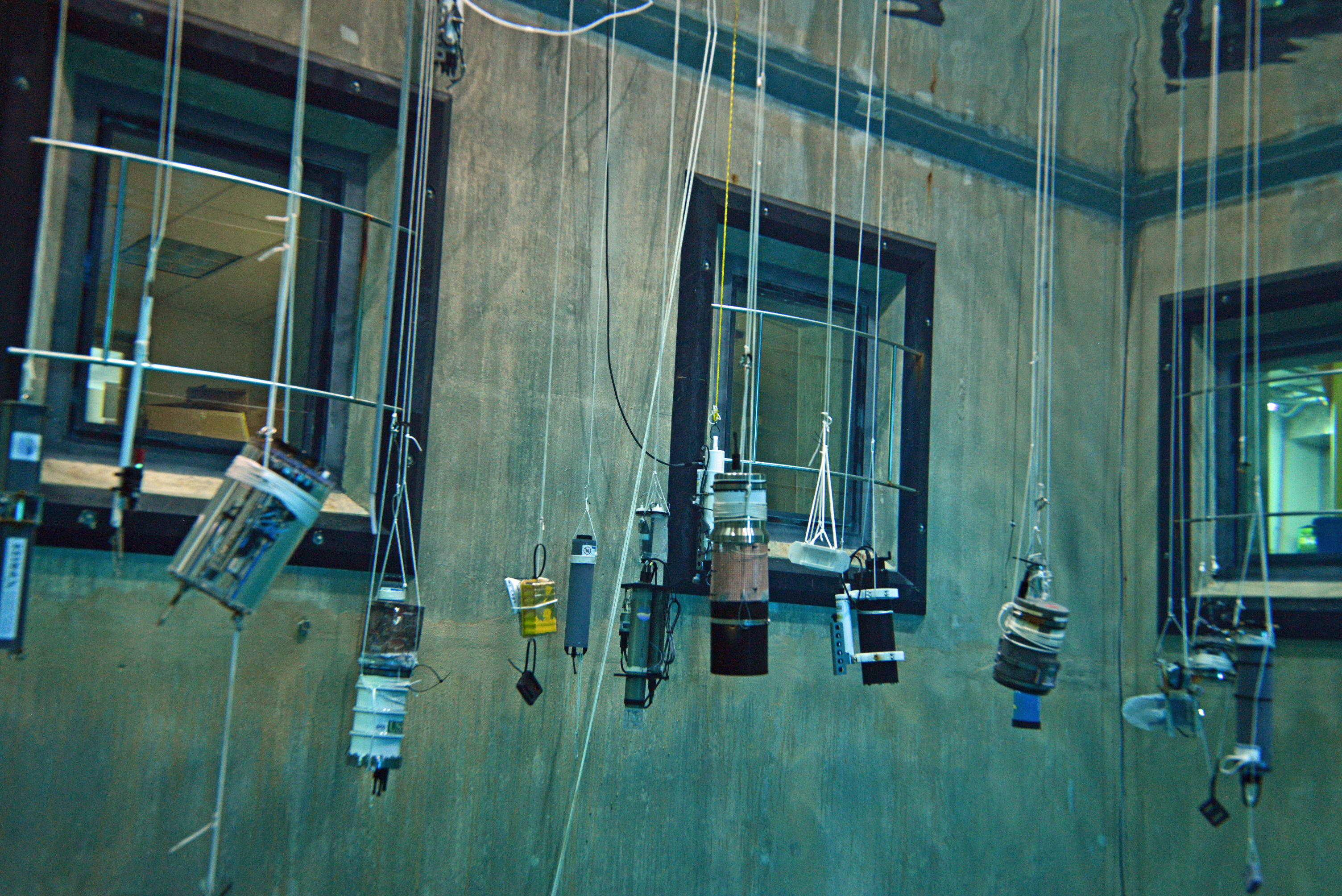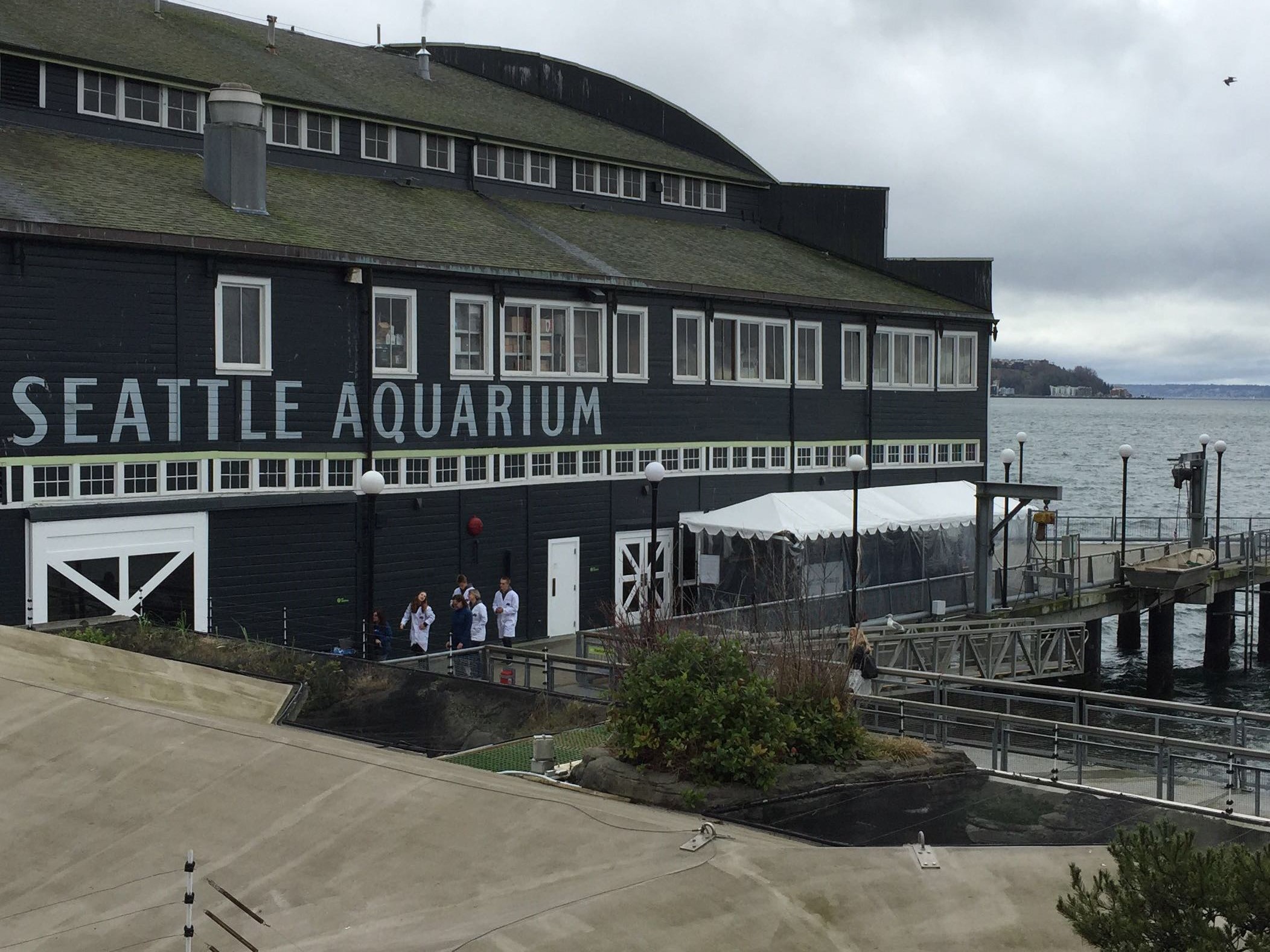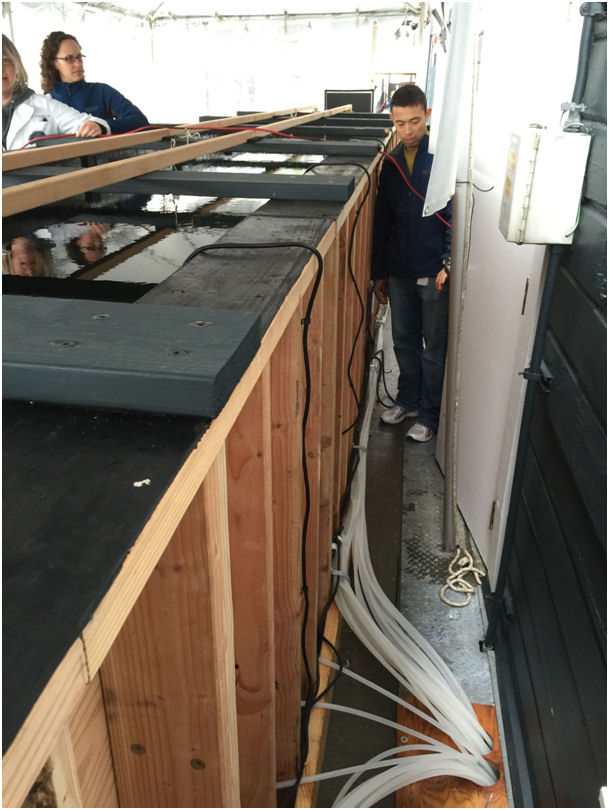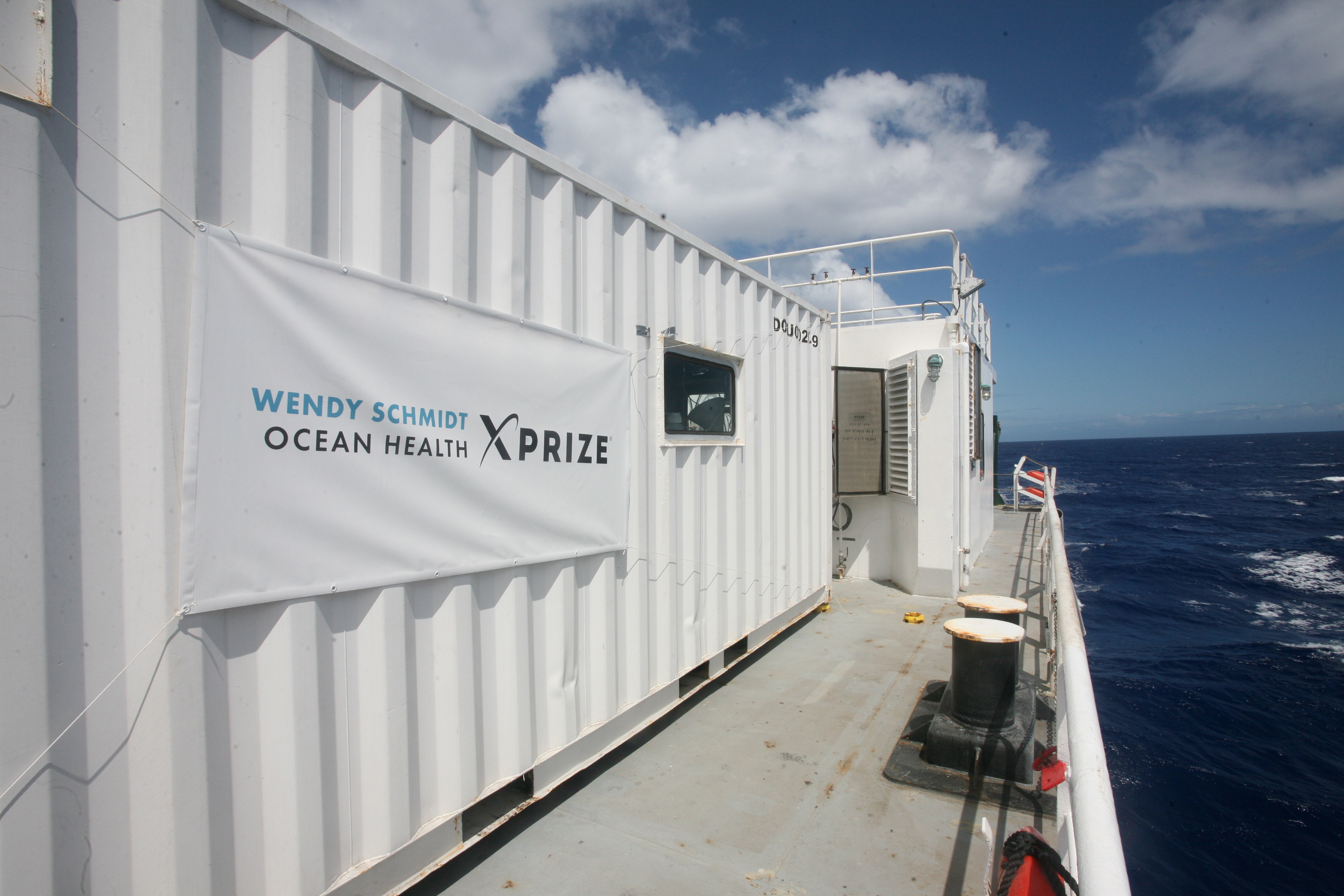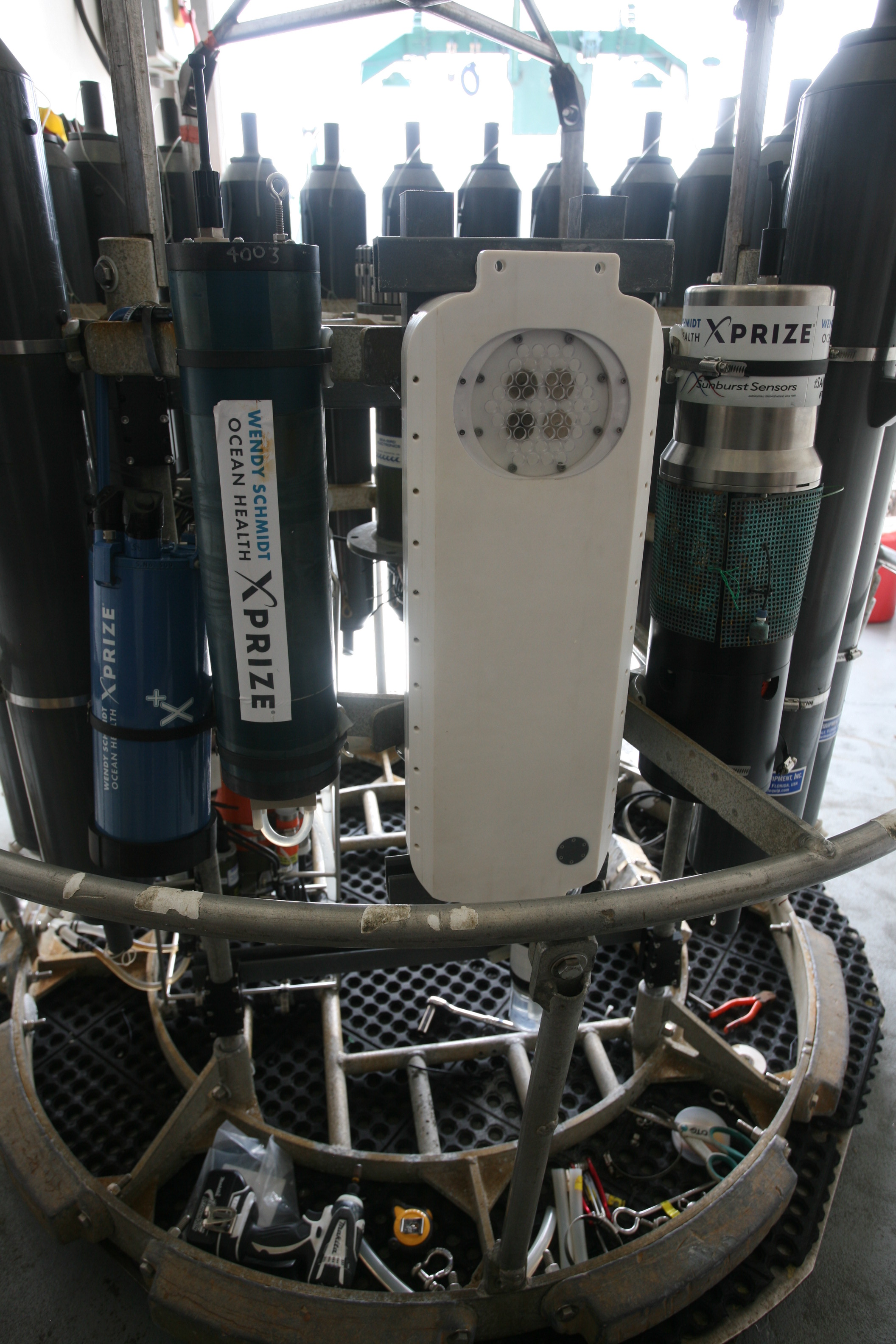Wendy Schmidt Ocean Health XPRIZE
In support of NOAA’s goal to provide environmental expertise, Dr. Christopher Sabine and Dr. Richard Feely are members of the XPRIZE Prize Council, which guides the technical operations of the Wendy Schmidt Ocean Health XPRIZE.
 The Wendy Schmidt Ocean Health XPRIZE is a $2 million global competition that challenges teams of engineers, scientists and innovators from all over the world to create pH sensor technology that will affordably, accurately and efficiently measure ocean chemistry from its shallowest waters to its deepest depths. Ocean acidification has been well documented in some environments, but many important habitat regions remain under-explored due to the limited amount of accurate equipment and the high cost of travel and expenses associated with gathering the data, such as ship time. By incentivizing the design of more accurate and affordable pH sensors, the Wendy Schmidt Ocean Health XPRIZE will help scientists and industrial users have better tools for detecting ocean acidification in the field.
The Wendy Schmidt Ocean Health XPRIZE is a $2 million global competition that challenges teams of engineers, scientists and innovators from all over the world to create pH sensor technology that will affordably, accurately and efficiently measure ocean chemistry from its shallowest waters to its deepest depths. Ocean acidification has been well documented in some environments, but many important habitat regions remain under-explored due to the limited amount of accurate equipment and the high cost of travel and expenses associated with gathering the data, such as ship time. By incentivizing the design of more accurate and affordable pH sensors, the Wendy Schmidt Ocean Health XPRIZE will help scientists and industrial users have better tools for detecting ocean acidification in the field.
The XPRIZE Validation Team is made up of PMEL and JISAO scientists that bring unique expertise because they have been making these measurements for decades. The Validation Team makes the official measurements, by which all the other teams’ measurements are judged, and they have been involved in each phase of the contest, including the final phase. During the final phase, the finalist team sensors were put to the ultimate test, and sent to a depth of 3,000 meters (almost 2 miles deep). A separate team of judges compared the data from the contestant's sensors with the data provided by the Validation Team to decide the ultimate winners of the Prize purses.
Contest Phases
Phase 1: Innovation Phase
During Phase 1, teams registered and built their submissions for the competition. During this phase the Wendy Schmidt Ocean Health XPRIZE Forum was held at Oceanology International at the ExCel Center in London, UK from March 11-13, 2014. This phase encouraged teams to develop innovative solutions to ocean pH sensing and to educate the public about ocean acidification.
Phase 2: Lab Trials at a pool at the Monterey Bay Aquarium Research Institute
The Lab Trials put teams’ technologies through a rigorous three-month trial in controlled laboratory conditions to test the accuracy, precision, and stability of their sensors.
Phase 3: Coastal Trials at the Seattle Aquarium
The Coastal Trials tested the top teams’ technologies in the face of challenging coastal conditions to evaluate their performance over the course of a month-long real-world test using seawater from Elliott Bay during the month of February 2015. The Coastal Trials allowed all of the sensors to be tested simultaneously in a specially designed tank at the Seattle Aquarium. The photos show the initial deployment of the sensors into the tank. Validation scientists Adrienne Sutton and Remy Okazaki are preparing the tank to receive the sensors.
Phase 4: Ocean Trials at Ocean Station Aloha
The Ocean Trials tested the five finalists for the accuracy purse to measure a full ocean depth with unprecedented precision and accuracy. The sensors were tested on nine vertical profiles of a CTD-Rosette package that was lowered to depths to depths up to 3000 m (almost 2 miles deep).
Stay tuned for the announcement of the winners on July 20th in New York City.

